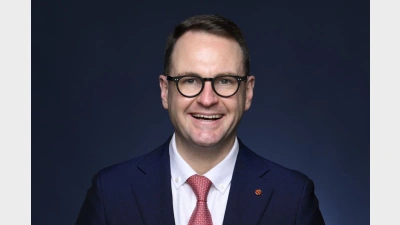Reaping the benefits
The industry superannuation mega-fund is reaping all the anticipated benefits of its huge scale and experiencing none of the potential downsides, according to its chief executive .
He said the most significant scale advantages for the fund related to its ability to command substantial cost reductions and greater flexibility from service providers.
At this stage, one of the most obvious benefits of the fund’s size has been in the area of insurance, with AustralianSuper’s signing with CommInsure delivering member benefit increases of between 10 per cent and 100 per cent.
Because of the fund’s scale, “They were able to sharpen the pencil more on price and to be more flexible in the design of the insurance”, Silk said.
Cost savings have also been realised on the administration side, with the cost per unit of printing the various member communications significantly reduced because of the large scale of the print run.
When asked if there were any disadvantages in the sheer size of AustralianSuper, Silk admitted there probably were some, but they had not yet become apparent.
While the fund’s size has attracted intense scrutiny from the Australian PrudentialRegulation Authority, Silk said no breaches of any kind were evident within its various prudential reporting and administration systems.
Silk also spoke about the investment challenges currently facing AustralianSuper and other superannuation funds, with trustees facing new challenges to continue investing money in line with their responsibilities to members.
“The nation’s superannuation funds, driven chiefly by the SG [Superannuation Guarantee] legislation, are accumulating massive resources that require money be invested consistent with the fund trustees’ risk and return assessment,” Silk said.
Silk pointed to the evolution of superannuation investment portfolios, which have shifted from domestic bonds and equities to broader strategies incorporating offshore investments, increasing investment in infrastructure and direct company shares.
He cited recent reports of a large, unnamed Victorian superannuation fund that is planning a joint venture investment in an emerging child-care centre as one example of this shift.
Silk spoke about the growing trend for superannuation funds to invest in infrastructure, fuelled by what he referred to as a “Government aversion to debt” and national infrastructure “crying out for replenishment and addition”.
Funds are beginning to fill up the gaps in infrastructure investment left by Government, particularly State Governments, which “have a very significant infrastructure responsibility”, said Silk.
“Infrastructure, while sometimes still being called an alternative investment, has become quite a mainstream investment choice for many funds,” he said.
While believing the majority of money invested with superannuation funds would remain in domestic-based investments, Silk said “the proportion that is invested overseas will increase, driven fundamentally by the much greater opportunities that are available throughout the world”.
He also discussed the remuneration structure of advice as it relates to superannuation funds.
“It’s timely to consider the future of the industry in the context of two questions: is the industry’s operating consistent with the objectives of the SIS [Superannuation Industry Supervision] legislation and, in particular, … have we struck the right balance between the interests of consumers and the interests of those of us who are servicing them?
“And if not, what afterthoughts might come in, and what might they mean for the future of the industry?”
He applied the analogy of drink driving, which was once considered de rigueur but now is socially unacceptable, to the commission-based model of advice remuneration.
“In years to come, I honestly think that commission-based advice, particularly for mandatory superannuation contributions … will be seen in a similar light,” Silk said.
Silk touched on the experiences of industry funds as distinct from the retail market.
“I expect industry funds to have a gradual increase in membership provided that three very important issues are dealt with appropriately.
“Firstly, that they continue to create good investment returns over the long term; secondly, that they market themselves cleverly and, thirdly, that they continue to enjoy a cost-advantage over their commercial rivals.”
Two particular challenges he foresees for AustralianSuper and other industry funds is their imperative to maintain a genuine member focus, with greater size making it easier to lose touch with individual members.
“The bigger they get, the more a risk that becomes,” Silk said.
Another is distribution, with industry funds enjoying greater membership increases as a result of this structure being challenged to adopt a new distribution model to retain this particularly attractive method.
Recommended for you
Future Group is set to take on nearly $1 billion in funds under management (FUM) and welcome more than 100,000 new members following two significant successor fund transfers.
Insignia’s Master Trust business suffered a 1.9 per cent dip in FUA in the third quarter, amid total net outflows of $1.8 billion.
While the Liberal senator has accused super funds of locking everyday Australians out of the housing market, industry advocates say the Coalition’s policy would only push home ownership further out of reach.
Australia’s largest superannuation fund has confirmed all members who had funds stolen during the recent cyber fraud crime have been reimbursed.












